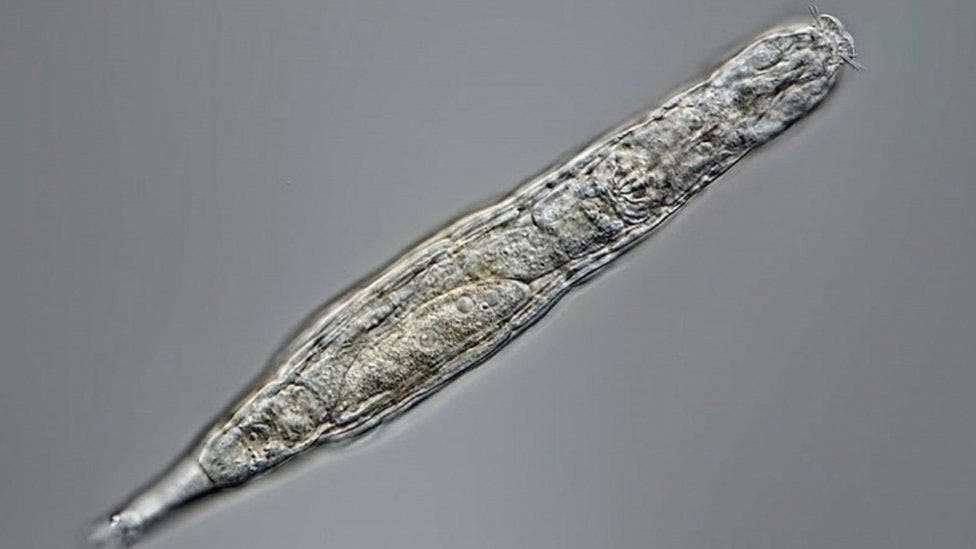Scientists thawed a bdelloid rotifer that was frozen for 24,000 years in Siberia’s Alayeza River, close to the Russian Arctic. Remarkably, the microscopic animal was not only alive but managed to reproduce asexually. Previously, scientists thought that such creatures couldn’t survive frozen for more than 10 years. Obviously, this prediction was blown out of the water by this evidence, suggesting that the rotifers can last thousands of years frozen, if not indefinitely.

Rotifers are multicellular animals that belong to their own ancient group which can be found across the world, mostly in freshwater environments and in moist soil. Rotifers belong to their own phylum, split into three major groupings which are further split into more than 2,200 species, meaning they are morphologically and genetically distinct from other animals at a very fundamental level.
Rotifers are sometimes called “wheeled animals” due to the beating cilia that surround their mouths, which resembles the rotation of a wheel. The edge of this “wheel”, called a corona, is used for feeding on organic waste, algae, and protozoans.
The creatures are microscopic and have soft bodies, which is why they are not favored for fossilization. But that doesn’t mean they’re fragile. Actually, far from it.
Like the more famous tardigrades (water bears), rotifers are extremophiles, capable of surviving low oxygen environments, severe dehydration, and freezing temperatures. In a new study published this week in the journal Current Biology, biologists in Russia showed that these amazing creatures are even tougher than previously believed.
“The takeaway is that a multicellular organism can be frozen and stored as such for thousands of years and then return back to life – a dream of many fiction writers,” Stas Malavin, of Russia’s Institute of Physicochemical and Biological Problems in Soil Science, told the Press Association.
These findings are among the most definite bits of evidence today that multicellular organisms could withstand thousands of years of cryptobiosis, which the Russian scientists describe as a “state of almost complete arrested metabolism.” The frozen Siberian rotifers aren’t the record holders for the oldest multicellular creatures to be brought back from the dead, though. Gizmodo reports that nematode worms dated to at least 32,000 years ago were resurrected, also by Russian scientists.
After the rotifers were carefully extracted to prevent contamination and radiocarbon-dated to the Late Pleistocene, they were revived in the lab and even produced several secondary rotifer cultures from the same thawed individuals. This marks “the longest reported case of rotifer survival in a frozen state,” according to the Russian biologists at Soil Cryobiology Lab who regularly drill the Siberian permafrost in search for ancient frozen life forms and fossils.
But what does this all mean for human cryogenics? Does this mean that it is possible to keep a human on ice in suspended animation for thousands of years? The Russian scientists claim that the more complex the organism, the trickier it is to preserve alive, frozen specimens. For mammals, this is not currently possible.
Multicellular organisms like mammoths or humans are killed when frozen due to the formation of ice crystals that penetrate cells, destroying them. But rotifers are somehow able to control the formation of ice crystals on the surface of their cells. A better understanding of this biochemical mechanism may help scientists develop new cryopreservation methods for storing cells, tissues, and perhaps even entire organs.


